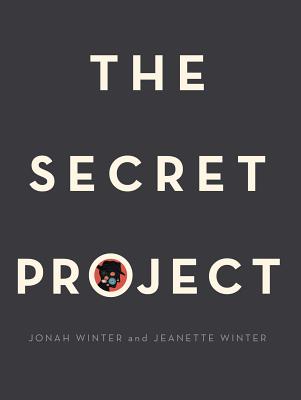Share this Post

Jonah Winter, author of The Secret Project, discusses the inspiration behind the book, and the importance of facing the difficult truth of our nation’s role in the development of the atom bomb.
I don’t remember the precise year I learned about the atom bomb, but I’m certain it was during grade school. Growing up in the 60s and 70s, I was very aware of the Vietnam War and the anti-war movement. I grew up in Dallas and was one year old when JFK was assassinated – in fact, I was on my father’s shoulders during the parade (a fact I cover in my picture book on JFK). Assassinations, war, shootings of students by the National Guard, war protesters – knowledge of such things surrounded me as a young child. I was never protected from it – and I’m thankful for this, because I believe it helped shape my moral compass. Though I certainly didn’t read about the atom bomb in any textbooks (or nonfiction picture books – since this genre didn’t exist back then), I was certainly aware of nuclear weapons. This was during the Cold War, after all – I grew up in the shadow of the Cuban Missile Crisis. Kids back then knew about nuclear weapons – as do kids now. Most grownups would rather they didn’t, of course, but kids do know about this aspect of the world. And I think most kids would be very interested to read about it. Enter Stage Left: The Secret Project.
It was a visit to the Bradbury Science Museum, run by the U.S. Energy Department’s Los Alamos National Laboratory (where the atom bomb was invented), that first sparked the explosive idea of writing a picture book about the creation of the atom bomb. It struck me then, and still does, as essentially a very simple story – and one that can be told mainly in pictures, one that young children can understand: A peaceful boys’ school, in basically the middle of nowhere, which suddenly gets taken over by the U.S. government for purposes so secret that no one, anywhere, can be told. The idea of the greatest scientists on the earth being brought together to invent something so secret that it can only be given the euphemistic name “The Gadget,” in a town which has no name and is basically just a P.O. box, is what inspired me to entitle the book “The Secret Project.” My ideological reason for telling this very important piece of history as a picture book story is this: To remove the invention of the atom bomb from the propagandistic context in which it is always placed. In America, we tend to always contextualize the invention and usage of the atom bomb, surrounding it with historical excuses: “brought a quick end to the war,” “saved lives” (one of the more bizarre excuses), and “what about how Japan treated the Chinese,” etc., etc. Here in America, we generally do not examine the basic fact that our government invented this horrible, monstrous, world-changing thing. We say “it had to happen,” and then we place it in a box and try not to think about it. We have no trouble talking about the Holocaust, because we were the good guys who helped bring an end to this, the worst crime against humanity ever committed. But we refuse to look – to really look – at the devastation we wrought with the atom bomb, or the new age of horror we ushered in through this invention. My book covers just the invention and first test of the bomb – not Hiroshima or Nagasaki. It is intended for very young readers. But it is by no means intended as a bedtime story. I see no reason why every nonfiction picture book has to have a happy ending or be inspiring. Why not encourage children to think? Or to learn about the parts of their cultural history which are not so virtuous? If we keep protecting American children from “difficult” truths, keep whitewashing the ignominious chapters of our history, then basically we are continuing to create successive generations of adults who don’t really know or care about the dangers, for instance, of nuclear proliferation, or about our self-perpetuating racism (which generation after generation of many white Americans refuse to examine).
I can imagine that some adults will call what I’m writing “propaganda” – which I would find ironic, given the fact that all I’m doing is attempting to provide a counterpoint to the seemingly never-ending propaganda inherent in the education of American children about American history. Indoctrinating young children about all the glories of America, encouraging them to believe in “American exceptionalism,” is really just a hop, skip and a jump away from the process that was used to indoctrinate the Hitler Youth on the superiority and glory of the Aryan race. If we are going to present American history to very young children, there needs to be a balance between glorification and critical examination. My goal is to help provide that balance.
All week long we’re celebrating ALL THE WONDERS of The Secret Project, including an inside look at the book, an interview with author Jonah Winter, and a closer look at how our actions today have consequences for tomorrow.
about the author

Jonah Winter is the author of more than thirty celebrated nonfiction picture books including Diego, illustrated by Jeanette Winter; Jazz Age Josephine, illustrated by Marjorie Priceman; Sonia Sotomayor: A Judge Grows in the Bronx, illustrated by Edel Rodriguez; The Founding Fathers! illustrated by Barry Blitt; and Lillian’s Right to Vote: A Celebration of the Voting Rights Act of 1965, illustrated by Shane W. Evans. You can visit his website here.


